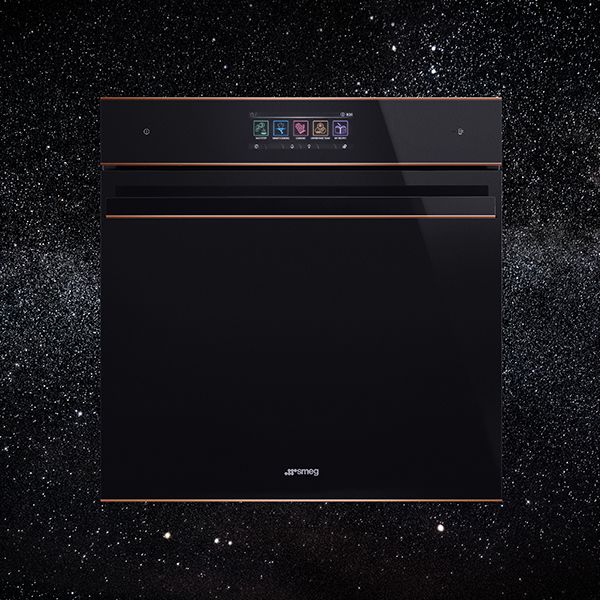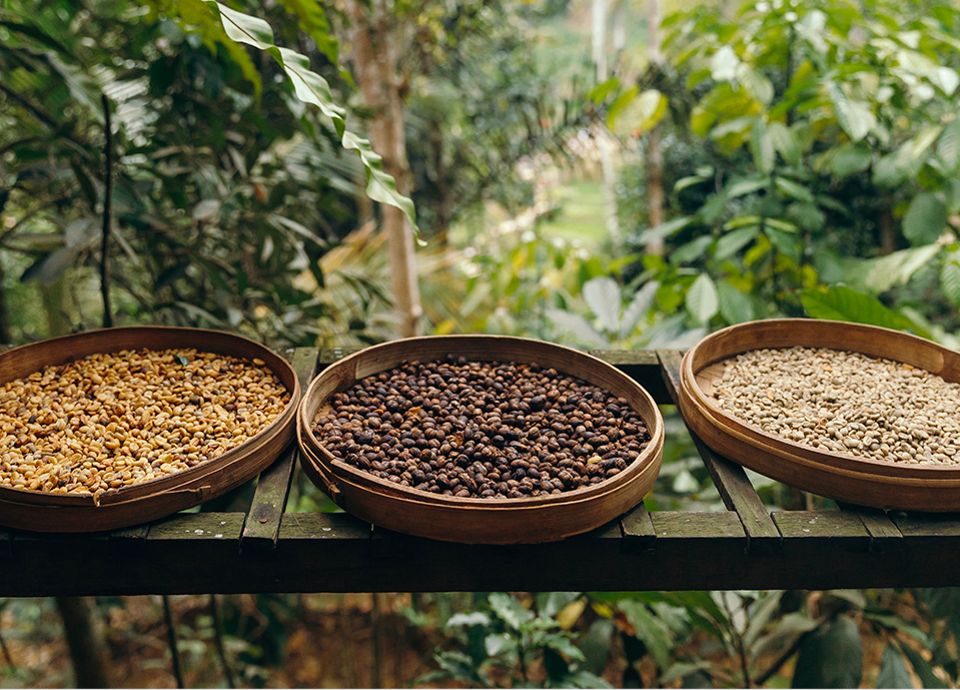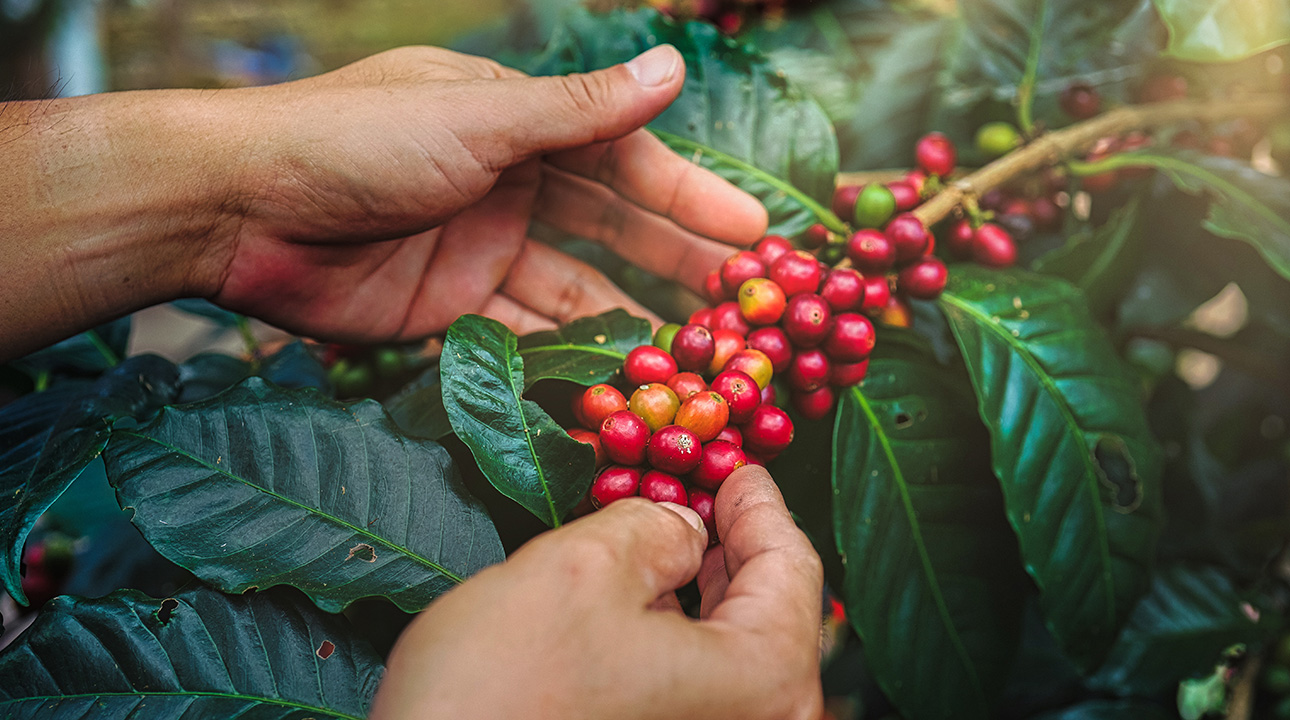The coffee beans we buy and grind to create our morning brew are the result of a process that begins with the harvesting of coffee beans all the way through to their processing, blending, and finally, roasting.
The coffee plant belongs to the Rubiaceae family and thrives in equitorial tropical climates. The two species that we cultivate are the Coffea Arabica and Coffea Canephora (Robusta). The fruit of the coffee plant is a green drupe when still unripe, turning red after 7-8 months. Once ripe, it is similar to wild cherries (its namesake). Coffee cherries consist of a skin (outer exocarp) and pulp (endocarp) that enclose two seeds or kernels, which are covered by a parchment casing and a silvery membrane.
Ripening is not simultaneous for all berries, so harvesting takes place over several weeks. In Brazil, harvesting takes place between May and September, October to March in Central America and from March to September in Africa.
There are two systems used to pick coffee cherries: picking and stripping. Picking is carried out manually: workers select only ripe coffee cherries, then return to the same plant a number of times over several weeks to achieve a homogeneous, high-quality harvest. Stripping, on the other hand, is performed in a single step by workers or special machines that pick all the coffee cherries, both unripe and fermented.
After harvesting, unripe or overripe fruit is removed, and the processing stage begins. This process extracts green coffee beans and prepares them to be exported. There are three coffee cherry processing methods: dry, wet and semi-washed. In Dry, the coffee cherries are spread out in thin layers and left to dry in the open air for 2-3 weeks. With this method, 'natural coffee' is obtained.
With wet processing, coffee cherries are stripped by a machine and the seeds are left to ferment in large tanks of water for 1-2 days. From this process, washed or 'mild' coffee is created.
With semi-washed processing, the cherries are de-pulped and demucillaged by a special machine, thereby avoiding the fermentation phase. Coffee is then dried in the sun or in driers creating coffee blends that are called 'semi-washed'.
Green coffee is then ready to be shipped to the country of destination. It's transported in containers, packed in 60 or 69 kg jute sacks.
At their destination, to attain the highest quality from the coffee beans, experienced roasters can implement additional cleaning and sorting methods such as blowing, skewering, densimetric sorting and optical sorting. Expert coffee tasters lead the blending process: they are skilled in the art of mixing different types of coffee to achieve well-defined flavours.
After blending, coffee beans are roasted through flows of hot air, with gradually modulating temperatures to obtain different results. These depend on the type of preparation the product is intended for: mocha, filter or espresso.


















































































































